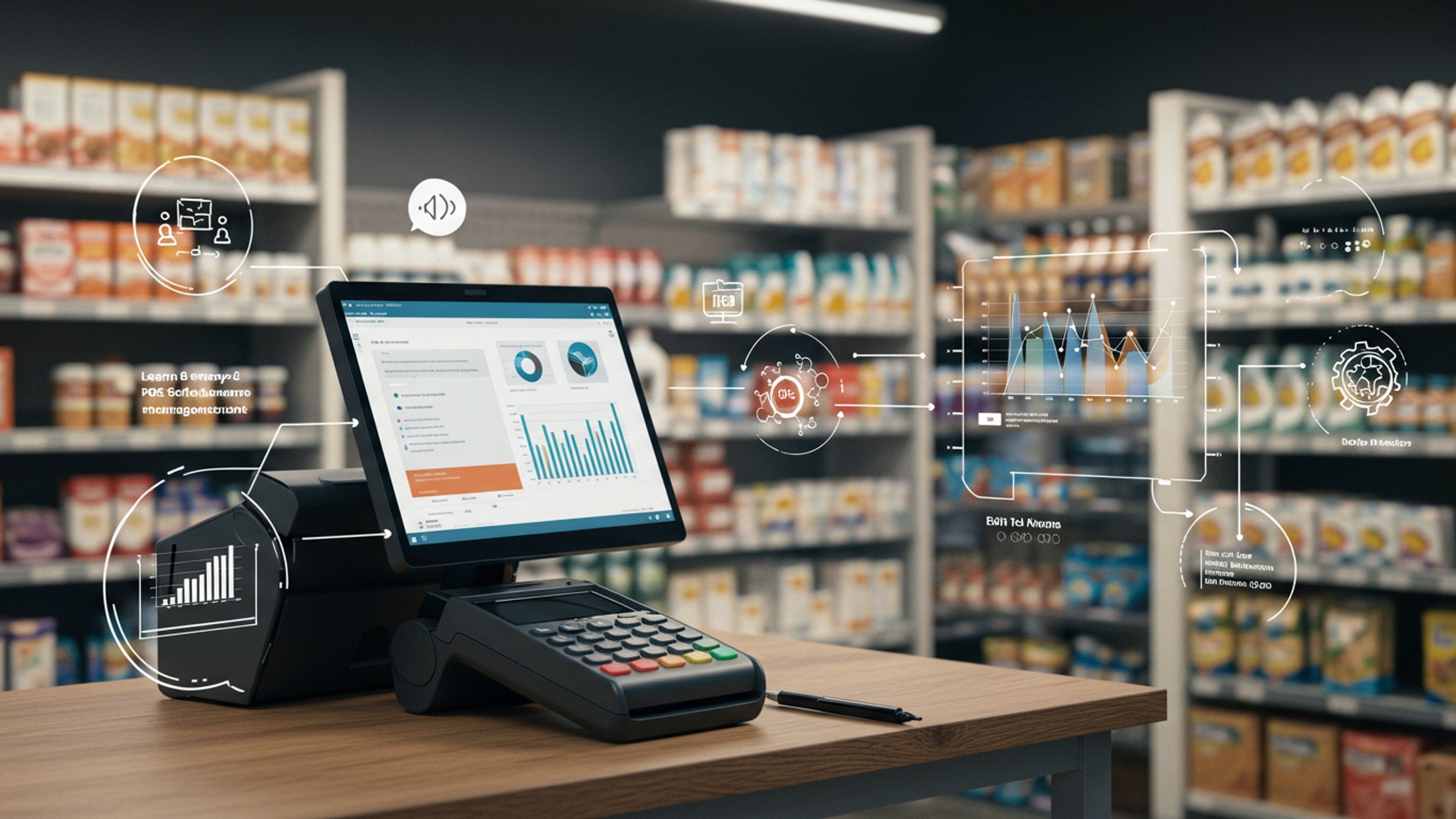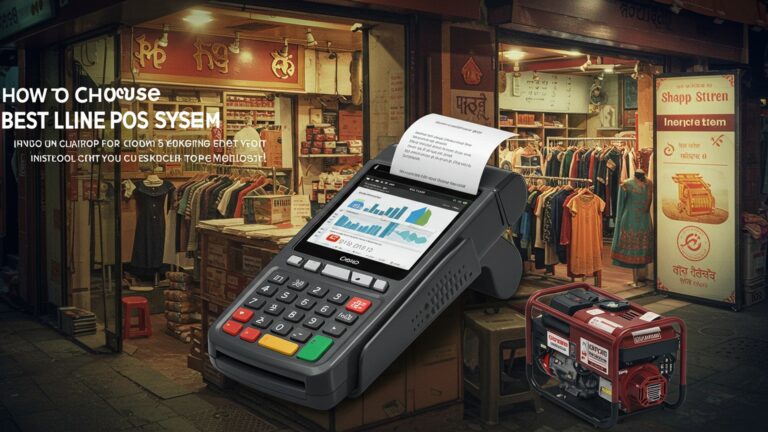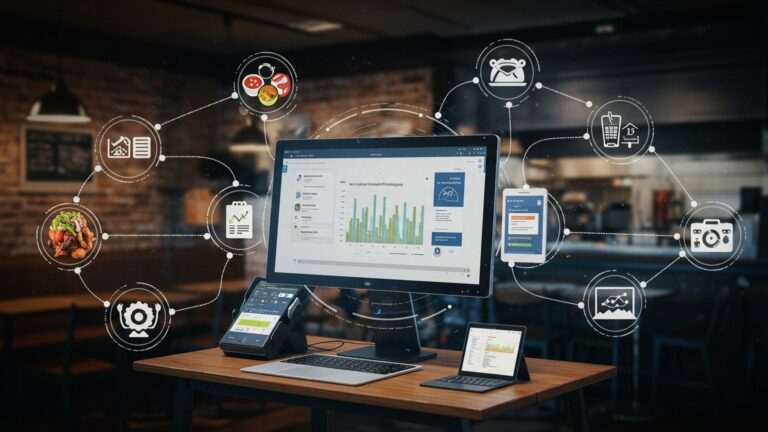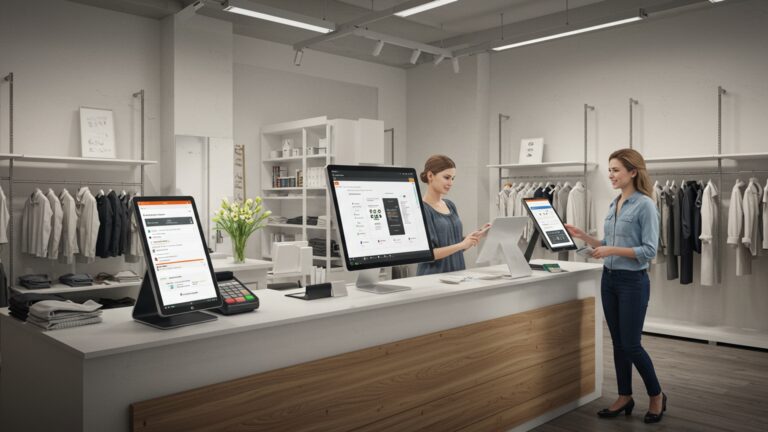Learn 8 Smart Ways POS Software Streamlines Inventory Management
Navigating the complexities of modern retail and e-commerce demands more than just basic stock counting; businesses today grapple with dynamic supply chains, fluctuating consumer demand. the constant pressure to optimize capital. Manual inventory processes or outdated systems frequently lead to costly stockouts, overstocking. missed sales opportunities. This is where robust pos software with inventory management becomes indispensable, transforming a logistical headache into a strategic asset. Advanced systems now leverage real-time sales data, predictive analytics. even AI-driven forecasting to ensure precise stock levels, minimize waste. streamline operations from warehouse to checkout, empowering businesses to react swiftly to market shifts and enhance profitability.

1. Real-Time Stock Tracking: The End of Guesswork
One of the most transformative features of modern pos software with inventory management is its ability to provide real-time stock tracking. Gone are the days of manual counts, delayed updates. the frustrating guesswork that often led to stockouts or overstocking. When a customer makes a purchase, the POS system instantly deducts that item from your inventory count. Similarly, when new stock arrives and is scanned in, the system updates immediately.
This immediate synchronization means you always have an accurate picture of what’s on your shelves, in your backroom, or even across multiple store locations. For a small boutique, this might mean knowing precisely how many of that popular dress are left. For a hardware store, it could be the exact count of a specific screw size. This level of accuracy is critical for customer satisfaction, as it prevents promising an item that isn’t actually available and helps in quickly locating products for customers.
Consider a busy coffee shop: a traditional system might only update inventory. With a robust pos software with inventory management, every espresso shot, every pastry sold, is immediately accounted for. This real-time data allows the manager to make immediate decisions, such as sending an employee to grab more milk from storage before the morning rush depletes current stock, or noticing a sudden surge in demand for a particular pastry and adjusting future orders accordingly.
2. Automated Reordering: Never Miss a Sale
Imagine a system that proactively tells you when to reorder, or even places the order for you. This is precisely what advanced pos software with inventory management offers through automated reordering. Businesses can set predefined reorder points and safety stock levels for each product. When an item’s quantity drops below its reorder point, the system can automatically generate a purchase order (PO) or alert the manager to initiate one.
This functionality prevents stockouts of popular items, ensuring you never miss a sale due to empty shelves. It also minimizes capital tied up in excess inventory by helping you maintain optimal stock levels. For instance, a clothing retailer might set a reorder point of 5 units for a best-selling t-shirt. Once the stock hits 5, the POS automatically drafts a PO for 20 more units, sending it directly to the supplier or flagging it for approval. This frees up staff time that would otherwise be spent manually checking stock levels and drafting orders, allowing them to focus on sales and customer service.
The efficiency gained here is substantial. A case study by a mid-sized electronics retailer showed a 15% reduction in stockouts and a 10% decrease in carrying costs within six months of implementing automated reordering via their pos software with inventory management. This directly translated to improved sales and profitability.
3. Reduced Manual Errors: Boosting Accuracy and Efficiency
Manual inventory management is inherently prone to human error. Miscounts, transposed numbers. incorrect data entry are common pitfalls that can lead to significant discrepancies and operational headaches. POS software with inventory management drastically minimizes these errors by automating data capture at various touchpoints.
When items are scanned at the point of sale, received from suppliers, or returned by customers, the system records these transactions digitally and accurately. This eliminates the need for manual transcription and reduces the chances of costly mistakes. For example, instead of a stock clerk manually typing in quantities from a delivery manifest, they simply scan barcodes. the system updates the inventory with perfect accuracy.
Consider the contrast:
| Aspect | Manual Inventory Management | POS Software with Inventory Management |
|---|---|---|
| Data Entry | Handwritten logs, spreadsheets, prone to typos and miscounts. | Barcode scanning, automated deductions, digital records – high accuracy. |
| Time Spent | Significant time on counting, data entry, reconciliation. | Reduced time on routine tasks, more focus on analysis and strategy. |
| Error Rate | High, leading to discrepancies, stockouts, or overstock. | Minimal, system validates data, reduces human intervention. |
| Reconciliation | Labor-intensive, often involving physical recounts to find errors. | Automated reconciliation, quick identification of discrepancies. |
By shifting from manual processes to automated ones, businesses experience a notable increase in data accuracy, which underpins all other inventory management improvements.
4. Multi-Location Inventory Synchronization: Unified Control
For businesses operating multiple stores or warehouses, managing inventory across different locations can be a monumental challenge. Without a centralized system, it’s difficult to know what’s available where, leading to lost sales, unnecessary transfers, or even redundant purchases. POS software with inventory management solves this by providing seamless multi-location synchronization.
A central database tracks inventory levels for every product across all connected locations. When an item sells in Store A, the system not only updates Store A’s inventory but also reflects this change in the overall company-wide stock. This allows managers to view consolidated inventory reports or drill down to specific store levels from a single dashboard.
This capability is invaluable for businesses like a chain of sporting goods stores. If a customer in Store A wants a specific pair of running shoes that are out of stock there, the employee can quickly check the POS to see if they are available in Store B or Store C. They can then arrange for an inter-store transfer or direct the customer to another location, turning a potential lost sale into a successful transaction. This ensures that inventory is utilized efficiently across the entire enterprise, improving customer experience and operational fluidity.
5. Enhanced Sales Forecasting: Predicting Future Demand
Effective inventory management isn’t just about knowing what you have; it’s also about anticipating what you’ll need. POS software with inventory management is a goldmine of sales data, which, when properly analyzed, can provide powerful insights for sales forecasting. Every transaction recorded by the POS system contributes to a rich dataset detailing product popularity, seasonal trends, peak sales times. customer purchasing habits.
The software can generate reports that examine historical sales data over various periods (daily, weekly, monthly, annually), identifying patterns and trends. For example, a bookstore might see a significant spike in sales of gardening books every spring or a surge in holiday-themed merchandise in November and December. By understanding these patterns, businesses can make informed decisions about future stock levels.
Advanced pos software with inventory management often includes built-in analytics tools or integrates with business intelligence platforms to predict future demand with a higher degree of accuracy. This foresight allows businesses to:
- Order the right quantities of products at the right time.
- Plan promotions and marketing campaigns around anticipated demand.
- Optimize staffing levels during peak seasons.
- Reduce the risk of holding obsolete or slow-moving stock.
This proactive approach significantly improves cash flow by reducing inventory holding costs and maximizing sales opportunities.
6. Optimized Product Placement and Merchandising: Selling Smarter
Beyond just tracking numbers, the sales data collected by pos software with inventory management can offer profound insights into product performance, which in turn can optimize store layout and merchandising strategies. By analyzing which products sell well together, which items have high turnover. which locations within the store generate the most sales, businesses can make data-driven decisions about product placement.
For instance, the POS data might reveal that customers frequently purchase batteries when they buy remote-controlled toys. This insight could prompt a retailer to place batteries closer to the toy aisle. Or, if a particular end-cap display consistently outperforms others for a specific product category, the POS data validates this success and allows the business to replicate it elsewhere or focus on similar display strategies.
This granular understanding of product performance helps in:
- Identifying “power products” that drive sales and should be prominently displayed.
- Bundling complementary products to encourage larger purchases.
- Optimizing shelf space by removing slow-moving items and allocating more space to popular ones.
- Tailoring promotions and discounts based on real-time sales velocity.
Effectively, the POS system acts as a silent consultant, guiding merchandising decisions that directly impact sales volume and profitability.
7. Loss Prevention and Shrinkage Control: Safeguarding Your Assets
Inventory shrinkage – losses due to theft (internal or external), damage, administrative errors, or vendor fraud – is a significant challenge for many businesses. POS software with inventory management provides robust tools to combat shrinkage by offering greater transparency and accountability throughout the inventory lifecycle.
By maintaining accurate, real-time records of every item entering and leaving the store, the system makes it easier to identify discrepancies. For example, if a physical inventory count reveals a shortage of a particular item that doesn’t align with POS sales data, it flags a potential issue. This could indicate employee theft, miscounted deliveries, or even a system error that needs investigation.
Key features that aid in loss prevention include:
-
- Detailed Transaction Logs
Every sale, return. void is recorded with timestamps and associate IDs, making it easy to audit suspicious activity.
-
- User Permissions
Limiting access to inventory adjustments and returns based on employee roles reduces the opportunity for internal theft.
-
- Return Tracking
Monitoring return patterns can help identify fraudulent returns or “wardrobing.”
-
- Cycle Counting Support
Facilitates regular, small-scale inventory checks without disrupting operations, quickly identifying and rectifying discrepancies.
One retail chain reported a 20% reduction in inventory shrinkage within a year of implementing a comprehensive pos software with inventory management system, attributing the success to improved visibility and the ability to quickly pinpoint areas of loss.
8. Detailed Reporting and Analytics: Strategic Decision-Making
The true power of pos software with inventory management lies in its ability to transform raw data into actionable insights through comprehensive reporting and analytics. Beyond just knowing what’s in stock, these systems generate a wide array of reports that provide a holistic view of inventory performance, sales trends. operational efficiency.
Typical reports include:
-
- Inventory Valuation Reports
Showing the current monetary value of your stock.
-
- Sales by Product/Category
Identifying best-sellers and slow-movers.
-
- Inventory Turnover Rate
Measuring how quickly inventory is sold and replaced, indicating efficiency.
-
- Dead Stock Reports
Highlighting items that haven’t sold for a long time, prompting clearance or removal.
-
- Vendor Performance Reports
Evaluating supplier reliability and cost-effectiveness.
-
- Cost of Goods Sold (COGS) Reports
Essential for understanding profitability.
These reports empower business owners and managers to make strategic decisions. For example, a high inventory turnover rate indicates efficient stock management, while a low rate might suggest overstocking or poor sales. By analyzing COGS against sales revenue, businesses can identify which products are truly profitable and adjust pricing or purchasing strategies accordingly. This data-driven approach moves businesses away from reactive management to proactive strategic planning, ensuring sustained growth and profitability.
The ability of pos software with inventory management to collect, process. present this data makes it an indispensable tool for any modern retail or hospitality business looking to optimize its operations and secure its competitive edge.
Conclusion
Ultimately, embracing POS software for inventory management isn’t just about tracking items; it’s about transforming your operational efficiency and boosting your bottom line. By leveraging features like real-time stock updates and automated reordering, you can virtually eliminate common headaches like overstocking or frustrating stockouts that disappoint customers. My personal tip is to start by integrating your highest-moving inventory first to see immediate impact, then expand. I’ve observed that businesses proactively adopting these smart strategies, much like those seeking the best POS solutions for India, gain a significant competitive edge in today’s fast-paced retail landscape. Don’t just manage your inventory; empower it to drive growth, ensuring you’re always ready to meet demand and delight your clientele.
More Articles
Discover 7 Budget-Friendly POS Software for Every Grocery Store Business
Unlock 7 Powerful Benefits From Pharmacy Management Software Solutions
7 Smart Strategies to Optimize Pharmacy Inventory with Management Software
Discover the 7 Best POS Software Solutions in India for Your Business
Unlock Growth with 7 Essential Free POS Software Options for Small Businesses
FAQs
How does POS software help me know what’s in stock instantly?
POS software updates your inventory counts in real-time as sales happen or new stock arrives. This means you always have an accurate picture of what’s available without manual checks, helping you avoid over-selling or running out of popular items.
Does the system automatically update inventory when I make a sale?
Absolutely! Every time a product is sold through your POS, the system automatically subtracts it from your inventory count. No need for manual adjustments after each transaction, which saves a lot of time and reduces errors.
Can POS software make ordering from suppliers easier?
Yes, many POS systems can track sales trends and current stock levels to suggest when and how much to reorder. Some even have features to generate purchase orders automatically based on pre-set thresholds, simplifying your procurement process.
What about cutting down on manual inventory mistakes?
That’s a huge benefit! By automating tracking, updating. reporting, POS software significantly reduces human error that often comes with manual data entry or paper-based systems. This leads to much more accurate stock counts and fewer discrepancies.
Is this good for businesses with multiple store locations?
Definitely. Modern POS systems are excellent for managing inventory across multiple stores. You can centralize your inventory data, transfer stock between locations. get a consolidated view of your entire stock from one dashboard, making multi-location management a breeze.
What kind of insights can I get from POS inventory reports?
You can get a wealth of insights! POS software provides reports on sales performance, popular products, slow-moving items, inventory turnover, cost of goods sold. more. These reports help you make smarter decisions about purchasing, pricing. promotions.
Will using POS software really save me time on inventory tasks?
Absolutely. By automating tasks like stock counting, reordering. data entry, POS software frees up a significant amount of time that would otherwise be spent on tedious manual inventory processes. This allows you and your team to focus on more strategic business activities.





